Easy Watermelon Growing – who doesn’t dream of biting into a juicy, homegrown watermelon on a hot summer day? I know I do! But the thought of cultivating these sprawling fruits can seem daunting. Fear not, fellow garden enthusiasts! This isn’t just another gardening guide; it’s your passport to unlocking the secrets of effortless watermelon cultivation, even if you’re a complete beginner.
Watermelons have a rich history, dating back thousands of years to Africa, where they were prized for their hydrating properties in arid climates. Over time, they’ve spread across the globe, becoming a symbol of summer celebrations and backyard barbecues. But let’s be honest, store-bought watermelons often lack that intense sweetness and satisfying crunch of a truly fresh, homegrown one. That’s where these DIY tricks come in!
In this article, I’m going to share simple, yet effective, techniques that will transform your garden into a watermelon wonderland. We’ll cover everything from choosing the right variety for your climate to maximizing sunlight and water for optimal growth. Forget complicated gardening jargon and endless hours of labor. I’ll show you how easy watermelon growing can be with a few clever hacks and a little bit of know-how. Get ready to impress your friends and family with the most delicious watermelons they’ve ever tasted!
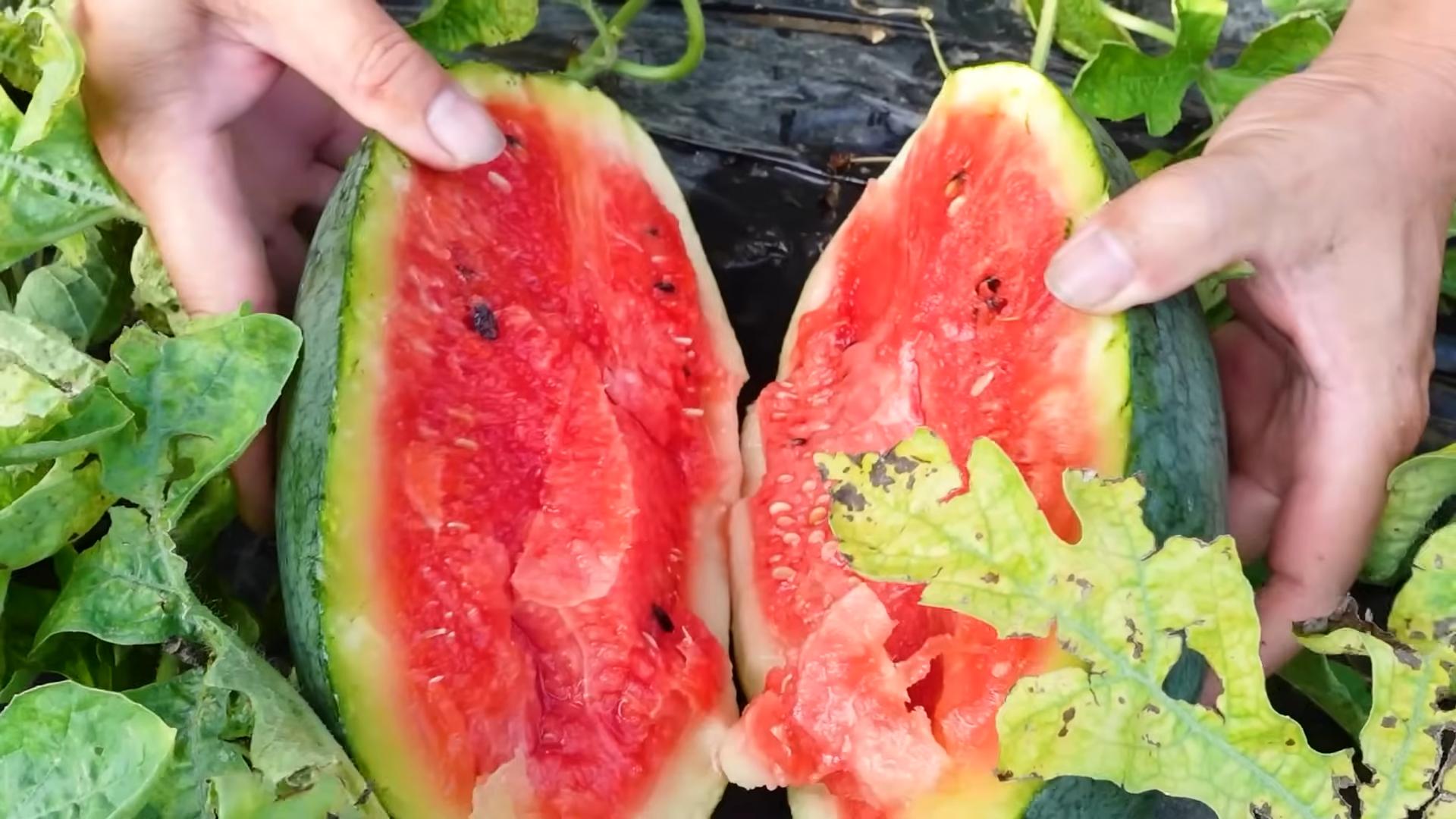
Growing Watermelons: A Beginner’s Guide to Sweet Success
Okay, so you want to grow watermelons? Awesome! It might seem intimidating, but trust me, with a little planning and effort, you can be enjoying your own homegrown, juicy watermelons before you know it. I’m going to walk you through everything you need to know, from choosing the right variety to harvesting your prize-winning melon.
Choosing Your Watermelon Variety
First things first, let’s talk about watermelon varieties. There are tons of options out there, and the best one for you will depend on your climate, garden size, and personal preferences. Here’s a quick rundown of some popular choices:
* ‘Sugar Baby’: This is a classic, compact variety that’s perfect for smaller gardens. It produces small, round melons with sweet, red flesh. It matures relatively quickly, which is great for shorter growing seasons.
* ‘Crimson Sweet’: A widely popular variety known for its large size, vibrant red flesh, and excellent flavor. It’s a reliable choice and a good all-around watermelon.
* ‘Jubilee’: This is a larger, oblong watermelon with a thick rind, making it good for shipping and storage. It has a sweet, slightly grainy texture.
* ‘Yellow Doll’: If you’re looking for something different, try a yellow-fleshed watermelon! ‘Yellow Doll’ is a small, round variety with a very sweet, honey-like flavor.
* ‘Seedless Varieties’: If you don’t want to deal with seeds, go for a seedless variety like ‘Triploid’. Keep in mind that seedless watermelons require a pollinator variety nearby to produce fruit.
Consider your space and growing season when making your choice. Smaller varieties like ‘Sugar Baby’ are ideal for limited space, while longer-season varieties like ‘Crimson Sweet’ need a good amount of warm weather to fully mature.
Preparing Your Garden Bed
Watermelons are heavy feeders, meaning they need a lot of nutrients to thrive. So, preparing your garden bed properly is crucial.
* Sunlight: Watermelons need at least 6-8 hours of direct sunlight per day. Choose a location in your garden that gets plenty of sun.
* Soil: Watermelons prefer well-drained, sandy loam soil with a pH between 6.0 and 6.8. If your soil is heavy clay, amend it with plenty of compost and organic matter to improve drainage.
* Nutrients: Before planting, amend your soil with compost, well-rotted manure, or a balanced fertilizer. Watermelons need plenty of nitrogen, phosphorus, and potassium.
Planting Your Watermelon Seeds or Seedlings
You can start watermelon seeds indoors or direct sow them in your garden. I usually prefer to start them indoors to get a head start, especially if you have a shorter growing season.
Starting Seeds Indoors:
1. Timing: Start your seeds about 4-6 weeks before the last expected frost in your area.
2. Containers: Use peat pots or biodegradable containers to avoid disturbing the roots when transplanting.
3. Soil: Fill the containers with a seed-starting mix.
4. Planting: Plant 2-3 seeds per container, about 1 inch deep.
5. Watering: Water gently to moisten the soil.
6. Warmth: Keep the containers in a warm place (around 80-85°F) until the seeds germinate. You can use a heat mat to help with this.
7. Light: Once the seeds germinate, move the containers to a sunny window or under grow lights.
8. Thinning: Once the seedlings have a few true leaves, thin them to one plant per container.
Direct Sowing Seeds:
1. Timing: Wait until the soil has warmed up to at least 70°F before direct sowing. This is usually a few weeks after the last expected frost.
2. Planting: Plant the seeds about 1 inch deep and 2-3 feet apart.
3. Watering: Water gently to moisten the soil.
Transplanting Seedlings:
1. Hardening Off: Before transplanting your seedlings outdoors, you need to harden them off. This means gradually exposing them to outdoor conditions over a period of 7-10 days. Start by placing them in a sheltered spot for a few hours each day, gradually increasing the amount of time they spend outdoors.
2. Planting: Dig a hole that’s slightly larger than the root ball of the seedling.
3. Placement: Gently remove the seedling from the container and place it in the hole.
4. Backfilling: Backfill the hole with soil and gently firm it around the base of the plant.
5. Watering: Water thoroughly after planting.
Caring for Your Watermelon Plants
Once your watermelon plants are in the ground, it’s important to provide them with proper care to ensure a bountiful harvest.
* Watering: Watermelons need consistent moisture, especially during fruit development. Water deeply and regularly, aiming for about 1-2 inches of water per week. Avoid overhead watering, as this can lead to fungal diseases. Drip irrigation is a great option.
* Fertilizing: Fertilize your watermelon plants every 2-3 weeks with a balanced fertilizer. You can also side-dress them with compost or well-rotted manure.
* Weeding: Keep the area around your watermelon plants free of weeds. Weeds compete with the plants for nutrients and water.
* Mulching: Mulch around your watermelon plants with straw or hay to help retain moisture, suppress weeds, and keep the soil cool.
* Pruning: While not essential, pruning can help improve air circulation and encourage fruit development. Remove any suckers (small shoots that grow from the base of the plant) and any yellowing or diseased leaves.
* Pollination: Watermelons need to be pollinated in order to produce fruit. If you’re growing seedless watermelons, you’ll need to plant a pollinator variety nearby. Bees are the primary pollinators, so encourage them to visit your garden by planting flowers. If you’re not seeing enough bees, you may need to hand-pollinate your watermelons.
Dealing with Pests and Diseases
Watermelons can be susceptible to a few pests and diseases. Here’s what to watch out for:
* Cucumber Beetles: These small, yellow and black beetles can damage leaves and transmit diseases. Control them with insecticides or by covering your plants with row covers.
* Squash Bugs: These brown bugs can suck the sap from your watermelon plants, causing them to wilt and die. Handpick them off your plants or use insecticides.
* Aphids: These small, sap-sucking insects can weaken your watermelon plants. Control them with insecticidal soap or by releasing beneficial insects like ladybugs.
* Powdery Mildew: This fungal disease causes a white, powdery coating on the leaves. Prevent it by providing good air circulation and avoiding overhead watering. Treat it with fungicides.
* Fusarium Wilt: This fungal disease causes the plants to wilt and die. Choose disease-resistant varieties and practice crop rotation to prevent it.
Regularly inspect your plants for signs of pests and diseases and take action promptly to prevent them from spreading.
Harvesting Your Watermelons
Knowing when to harvest your watermelons is key to enjoying their sweet, juicy flavor. Here are a few things to look for:
1. The Tendril Test: The tendril closest to the watermelon stem should be brown and dry.
2. The Ground Spot: The spot where the watermelon rests on the ground (the ground spot) should be yellow or cream-colored.
3. The Thump Test: Give the watermelon a thump. A ripe watermelon will sound hollow.
4. Days to Maturity: Check the seed packet or plant tag for the days to maturity. This is a good guideline, but it’s not always accurate.
Once you’ve determined that your watermelon is ripe, use a sharp knife to cut it from the vine, leaving a few inches of stem attached.
Enjoying Your Homegrown Watermelon
Congratulations! You’ve successfully grown your own watermelons. Now it’s time to enjoy the fruits (or rather, the melons) of your labor.
* Chilling: Chill your watermelon in the refrigerator for a few hours before serving.
* Cutting: Cut the watermelon into wedges or cubes.
* Serving: Serve the watermelon as a refreshing snack or dessert.
* Recipes: Get creative and use your watermelon in salads, smoothies, or even grilled watermelon steaks!
Growing watermelons can be a rewarding experience. With a little bit of planning and effort, you can enjoy your own homegrown
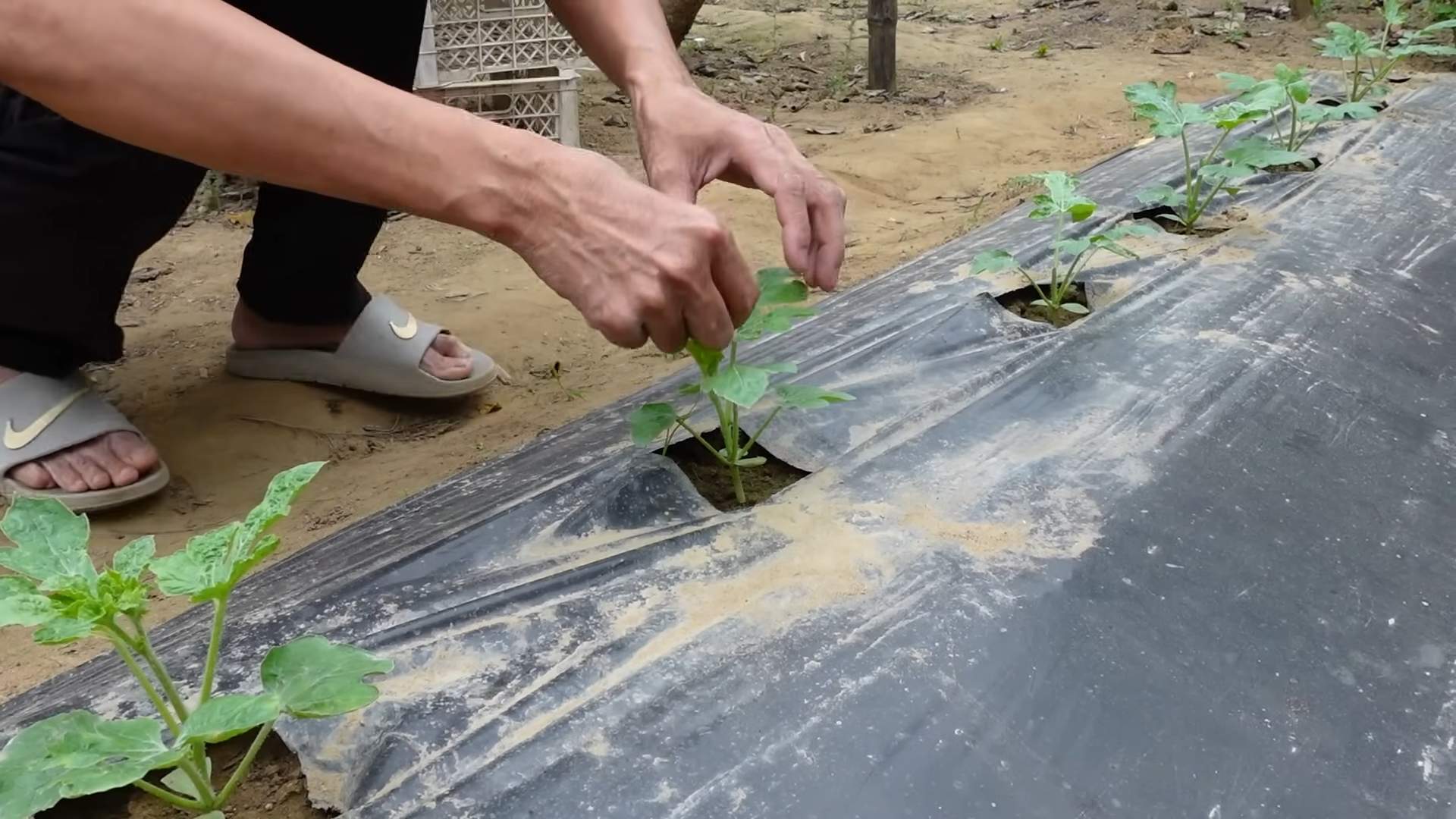
Conclusion
So, there you have it! Mastering the art of easy watermelon growing is not as daunting as it might seem. By implementing these simple yet effective techniques, you’re well on your way to harvesting juicy, sweet watermelons right in your own backyard. Forget the expensive grocery store varieties that often lack flavor; imagine the satisfaction of biting into a watermelon you nurtured from seed to fruit.
This DIY approach isn’t just about saving money; it’s about connecting with nature, understanding the growing process, and enjoying the unparalleled taste of homegrown produce. The methods we’ve discussed, from seed starting to proper watering and pollination techniques, are designed to maximize your yield and ensure the health of your watermelon plants.
But the beauty of gardening lies in its adaptability. Feel free to experiment with different watermelon varieties to find your personal favorite. Consider trying smaller, personal-sized watermelons like Sugar Baby if you have limited space, or opt for a yellow-fleshed variety for a unique twist. You can also explore companion planting to deter pests and improve soil health. Marigolds, for example, are excellent at repelling nematodes, while basil can help attract pollinators.
Don’t be afraid to get your hands dirty and embrace the learning process. Every garden is unique, and what works for one person might need tweaking for another. The key is to observe your plants closely, pay attention to their needs, and adjust your approach accordingly.
We’ve covered the essentials, but remember that continuous learning is part of the fun. Research specific challenges in your region, such as common pests or diseases, and proactively implement preventative measures. Consider joining local gardening groups or online forums to connect with other watermelon enthusiasts and share tips and tricks.
The most important thing is to take the plunge and start growing! The reward of a perfectly ripe, juicy watermelon is well worth the effort. We are confident that with these tips, you’ll be enjoying the fruits (literally!) of your labor in no time.
We encourage you to try these methods for easy watermelon growing and share your experiences with us. Let us know what worked best for you, any challenges you encountered, and any variations you tried. Your feedback will not only help us improve our guide but also inspire other gardeners to embark on their own watermelon-growing adventures. Share your photos and stories on our social media pages using #EasyWatermelonGrowing – we can’t wait to see your amazing harvests!
Now, let’s address some frequently asked questions to further clarify the process and ensure your success.
Frequently Asked Questions (FAQ)
What is the best time to start watermelon seeds indoors?
The ideal time to start watermelon seeds indoors is typically 4-6 weeks before the last expected frost in your area. This allows the seedlings to develop a strong root system before being transplanted outdoors. Check your local frost dates to determine the appropriate timing. Starting too early can result in leggy, weak seedlings, while starting too late can shorten the growing season and reduce your chances of a successful harvest.
How much sunlight do watermelons need?
Watermelons are sun-loving plants and require at least 6-8 hours of direct sunlight per day to thrive. Insufficient sunlight can lead to stunted growth, poor fruit development, and reduced sweetness. Choose a planting location that receives ample sunlight throughout the day. If you live in a particularly hot climate, some afternoon shade may be beneficial to prevent sunburn on the fruits.
What kind of soil is best for growing watermelons?
Watermelons prefer well-drained, sandy loam soil that is rich in organic matter. The soil should have a pH between 6.0 and 6.8. Before planting, amend the soil with compost or well-rotted manure to improve drainage, fertility, and water retention. Avoid heavy clay soils, as they can become waterlogged and inhibit root growth. If you have clay soil, consider growing watermelons in raised beds or containers.
How often should I water my watermelon plants?
Watermelons need consistent moisture, especially during fruit development. Water deeply and regularly, aiming for about 1-2 inches of water per week. Avoid overhead watering, as this can promote fungal diseases. Instead, water at the base of the plants, using a soaker hose or drip irrigation system. Reduce watering as the fruits ripen to prevent them from splitting.
How do I know when my watermelon is ripe?
Determining watermelon ripeness can be tricky, but there are several indicators to look for. First, check the tendril closest to the fruit stem. When this tendril turns brown and dries up, it’s a good sign that the watermelon is nearing maturity. Second, examine the underside of the watermelon where it rests on the ground. This spot, known as the ground spot, should turn from white to a creamy yellow color. Finally, thump the watermelon with your knuckles. A ripe watermelon will produce a deep, hollow sound.
What are some common pests and diseases that affect watermelons?
Watermelons are susceptible to various pests and diseases, including aphids, squash bugs, vine borers, powdery mildew, and fusarium wilt. Regularly inspect your plants for signs of infestation or disease. Use organic pest control methods, such as insecticidal soap or neem oil, to control pests. To prevent diseases, ensure good air circulation, avoid overhead watering, and practice crop rotation. Choose disease-resistant watermelon varieties whenever possible.
Can I grow watermelons in containers?
Yes, you can grow watermelons in containers, but you’ll need to choose a large container (at least 20 gallons) and select a compact or bush-type watermelon variety. Ensure the container has good drainage and use a high-quality potting mix. Water container-grown watermelons more frequently than those grown in the ground, as the soil in containers tends to dry out quickly. Provide support for the vines as they grow.
How can I improve pollination for my watermelon plants?
Watermelons require pollination to produce fruit. If you’re not seeing many bees or other pollinators in your garden, you can hand-pollinate the flowers. To do this, use a small paintbrush to transfer pollen from the male flowers (which have a thin stem behind the flower) to the female flowers (which have a small, immature watermelon behind the flower). Pollinate in the morning, when the flowers are open and receptive.
What are some good companion plants for watermelons?
Companion planting can help deter pests, attract pollinators, and improve soil health. Good companion plants for watermelons include marigolds, basil, nasturtiums, and radishes. Marigolds repel nematodes, while basil attracts pollinators and repels certain pests. Nasturtiums attract aphids away from watermelons, and radishes help break up the soil and improve drainage.
How do I store harvested watermelons?
Store harvested watermelons in a cool, dry place. Whole watermelons can be stored at room temperature for up to two weeks. Once cut, wrap the watermelon tightly in plastic wrap and store it in the refrigerator for up to five days. For optimal flavor, allow the watermelon to come to room temperature before serving.

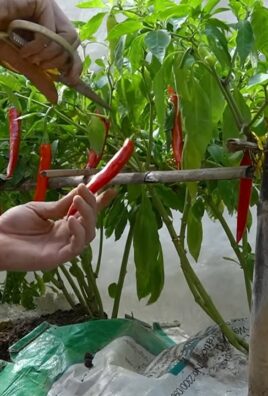
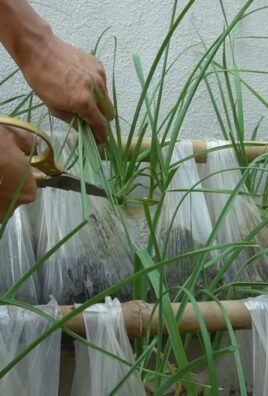
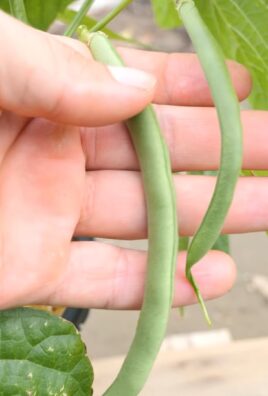
Leave a Comment